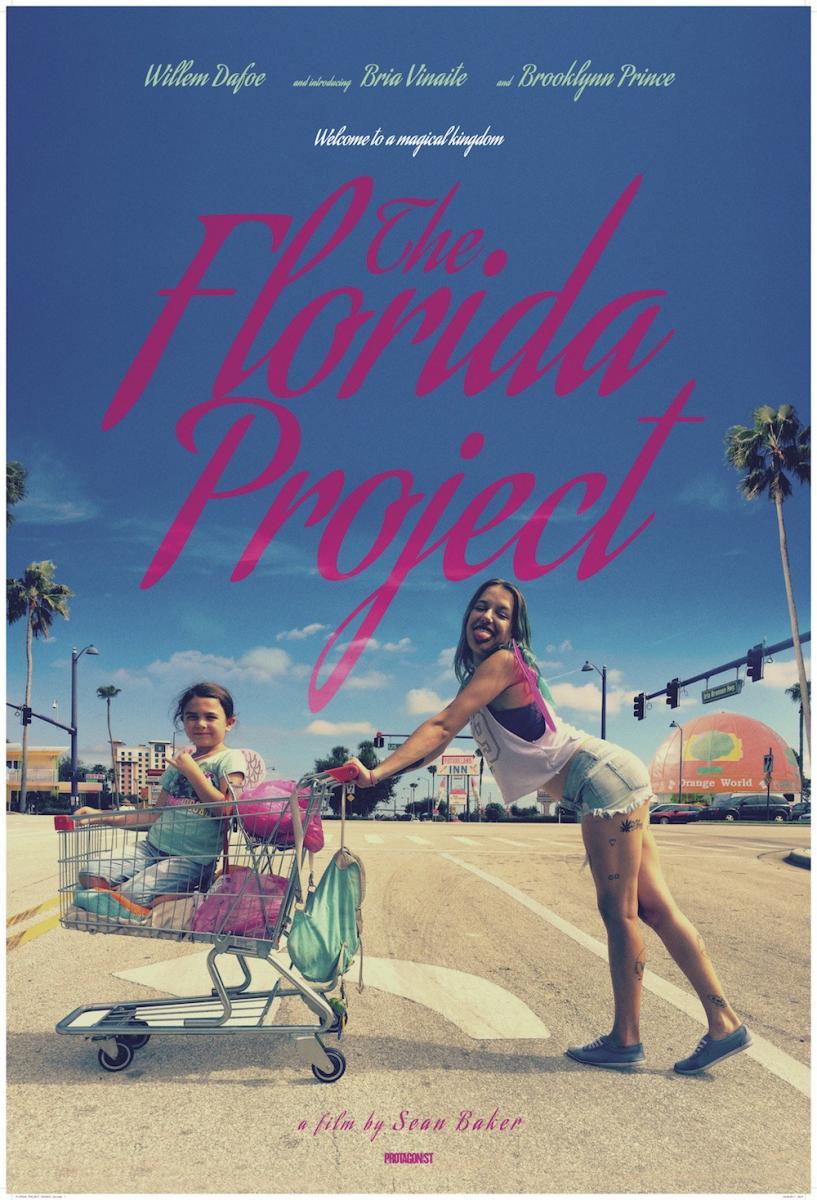

“The Florida Project,” one of the year’s critical darlings, immediately places a question in viewers’ minds that remains unanswered by the rest of the film. What exactly is the “Florida Project”?
It is clearly a play on words that, like all puns, begins from an assumed definition. This premise is a Florida housing “project” — in fact a motel, ironically named the Magic Castle — looked after by the kindly caretaker Bobby (Willem Defoe), occupied by unemployed Halley (Bria Vinaite) and constantly besieged by her carefree daughter Moonee (Brooklyn Prince) and her fellow unschooled toddlers. The children’s world is one of poverty, survived barely by the daily interruptions of childlike wonder that fixate on the trivial and trivializes the unfixable. All the while, Halley retreats to her own irreverent, irresponsible reveries quite becoming to her tragically young age. The horror of her impoverished condition gnaws at her and undermines her daughter’s chance at distraction from their reality.
Between Moonee’s infantile illusion and her mother’s elusive infantility, the audience is perhaps meant to infer a broader, American super-project — some continental sorrow — for which this preschool-purple extended-stay motel in Florida glistens as a particularly sad synecdoche. As the movie puts away its childish things, one is meant to feel the full weight of this country’s failure to provide for its most vulnerable and violated — by the end, one does certainly feel a moral punch to the gut.
But, as in most great films, the message is nowhere near as interesting as the medium, and the latter is where the true ‘project’ of “ The Florida Project” happens. That project is one of sound; if anything, what we see in “The Florida Project” is deception. Although it is the visual centerpiece of the film, the Magic Castle is never too decrepit, never too unlivable. The rooms are a bit crowded, but we never quite see deprivation. Instead, we hear it. The visible peace deceives, playing to our dominant sense and obscuring the ongoing war of noise. This interest in the world of sound is clear from the very beginning of the film, which opens with an instance of call-and-response. Visually, it is an unprovocative shot, simply centered on three children peering to the left of the screen. From here, the rest of the sequence intercuts between these three children and a fourth child, running towards them and, more importantly, calling them. He calls, and they respond. The pieces of their dialogue are cute, coarse and crass, the way the talk of children usually is. The film derives tremendous fun from such talk. Moonee and her associates are a rude bunch, and they constantly hassle ice cream parlors, neighbors and most of all the motel’s manager Bobby, often with an adorable dosage of clumsy profanity.
This vocal texture, crude and commonplace, is salvation for the adults who are mired in their own voices, so much more articulate and that much more agonized. Adults indeed do sometimes talk about fun things like late-night parties, but those conversations are cut short by the paragraphs they sputter about bills, child-rearing, work, sex work and evictions. The standout performances in this dark soundscape are surely Defoe and Vinaite. Defoe whispers his gentle lines like any overworked manager at a motel. His is the gruff voice of reason, seasoned by a lifetime of keeping it together. His opposite, Halley, reliably supplies moments of stark contradiction. Vinaite is the major discovery of the movie, which serves her film debut. It is often difficult to believe that prior to “The Florida Project”, she was not a professional actor but a professional Instagrammer, who sold her cannabis-themed clothing lines on social media. Halley sounds airheaded, but there is so much going on in her head and life that by the latter half of the movie, it appears that her scratchy whining is an attempt to straddle the boundary between two worlds — a parent who wishes to be a child.
Halley walks this tightrope between child and mom until the explosive finale of the film. All children grow up, and all of the children’s noises are drowned out by the stern sentences of adults. The emotional climax is driven by an explicit admission of the film’s sonic war. Halley does not want Moonee to hear what has to happen to her as child protective services take her away, and Moonee, in her usual impolite way, questions why scary strangers are tearing apart the family. Then comes the absolute end of the film, which will most likely conflict the audience.
The close of “The Florida Project” brings out the musicality hidden in the aural back-and-forth that constitutes the bulk of the film. It celebrates in its small, sad way the child that lost the war, and in a way only film — the best kind of film — can, it tips its hat to the illusion that is infinitely preferable to an impoverished reality. And with that tipping of the hat, the curtains of the project close, and what remains is one of the year’s most accomplished productions.